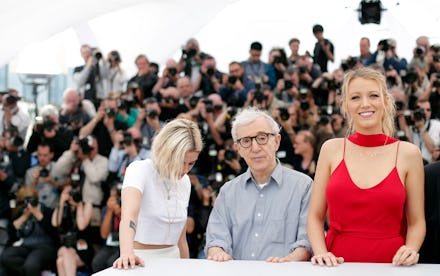One Chart Shows Just How "Empowering" Woody Allen's Movies Are for Women

This week, actress Blake Lively was busy defending Woody Allen against media scrutiny over his alleged history of child abuse. "It's amazing what Woody has written for women," Lively, who stars in Allen's latest movie, Cafe Society, told the Los Angeles Times. "I could [only] know my experience. And my experience with Woody is he's empowering to women."
Lively drew criticism for the quote, and deservedly so: Even if we overlook the allegations against Allen, his films aren't exactly progressive representations of women. Indeed, Allen is arguably the grandfather, or at the very least a shepherd, of several of Hollywood's most annoying female character tropes: the manic pixie dream girl, the frisky teen, the sexy psycho, the sex worker as walking punchline. Most of Allen's female love interests are more like porn fantasies than dynamic characters in their own right. In fact, his most realistic and relatable female characters are usually mentally ill women.
In addition to writing a parade of flat, cliché female characters, Allen loves to cast female love interests who are vastly younger than their male counterparts. The age discrepancy might be most noticeable in 1979's Manhattan, which features a 26-year gap between Allen and his 17-year-old girlfriend (who was underage both in the film and in real life). But as Allen's career progressed, the age gap widened. Allen's female characters stayed young, while his neurotic protagonists continued to age.
The Hollywood age gap fetishizes female youth and perpetuates society's bias against mature women, who are judged by infuriatingly different standards than their male peers. Most dangerous of all, glamorizing this unequal power dynamic in romantic relationships is inherently problematic.
To highlight just how wide the disparity is, we made the following chart tracking the age gaps between Allen's male leads and his female leads.